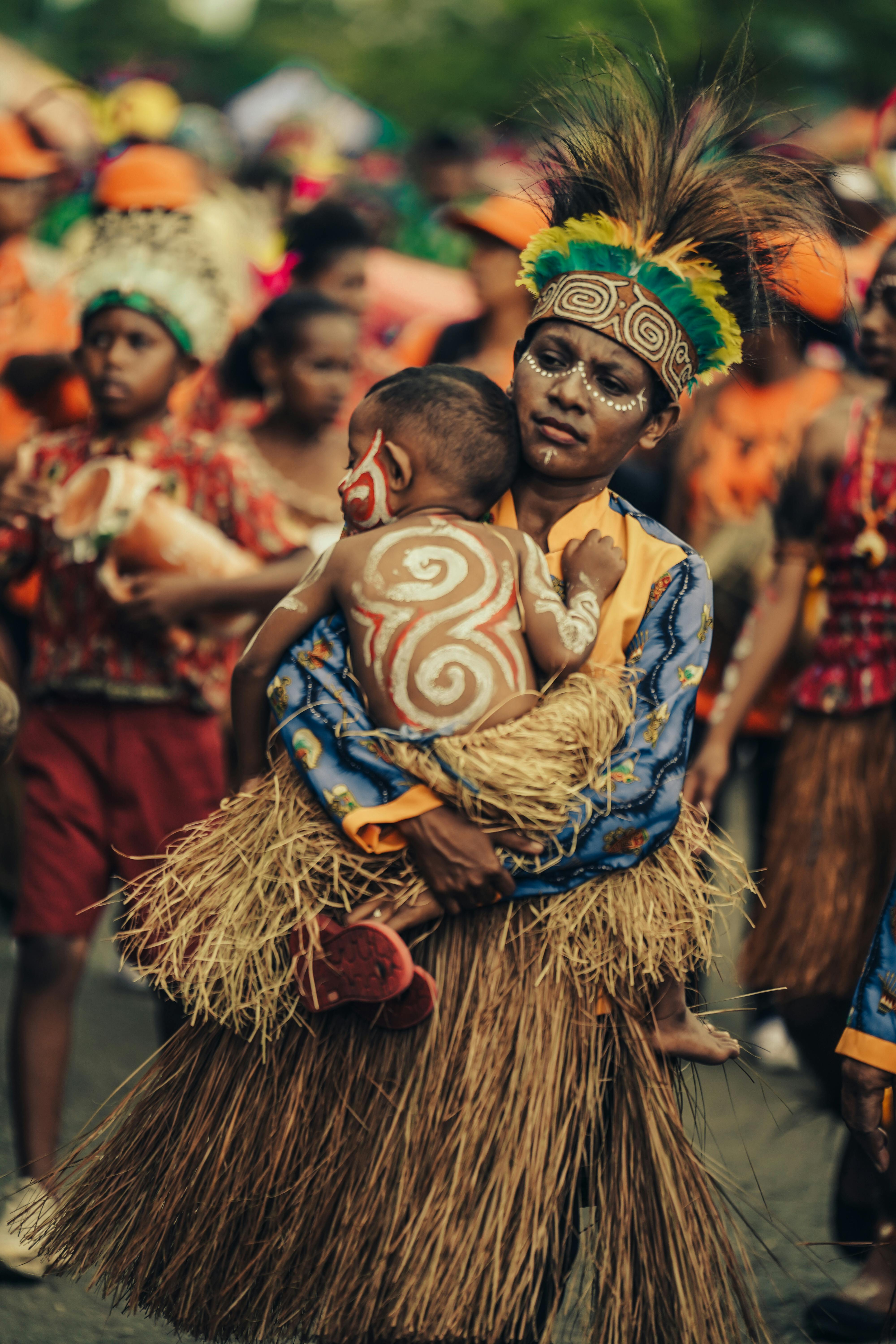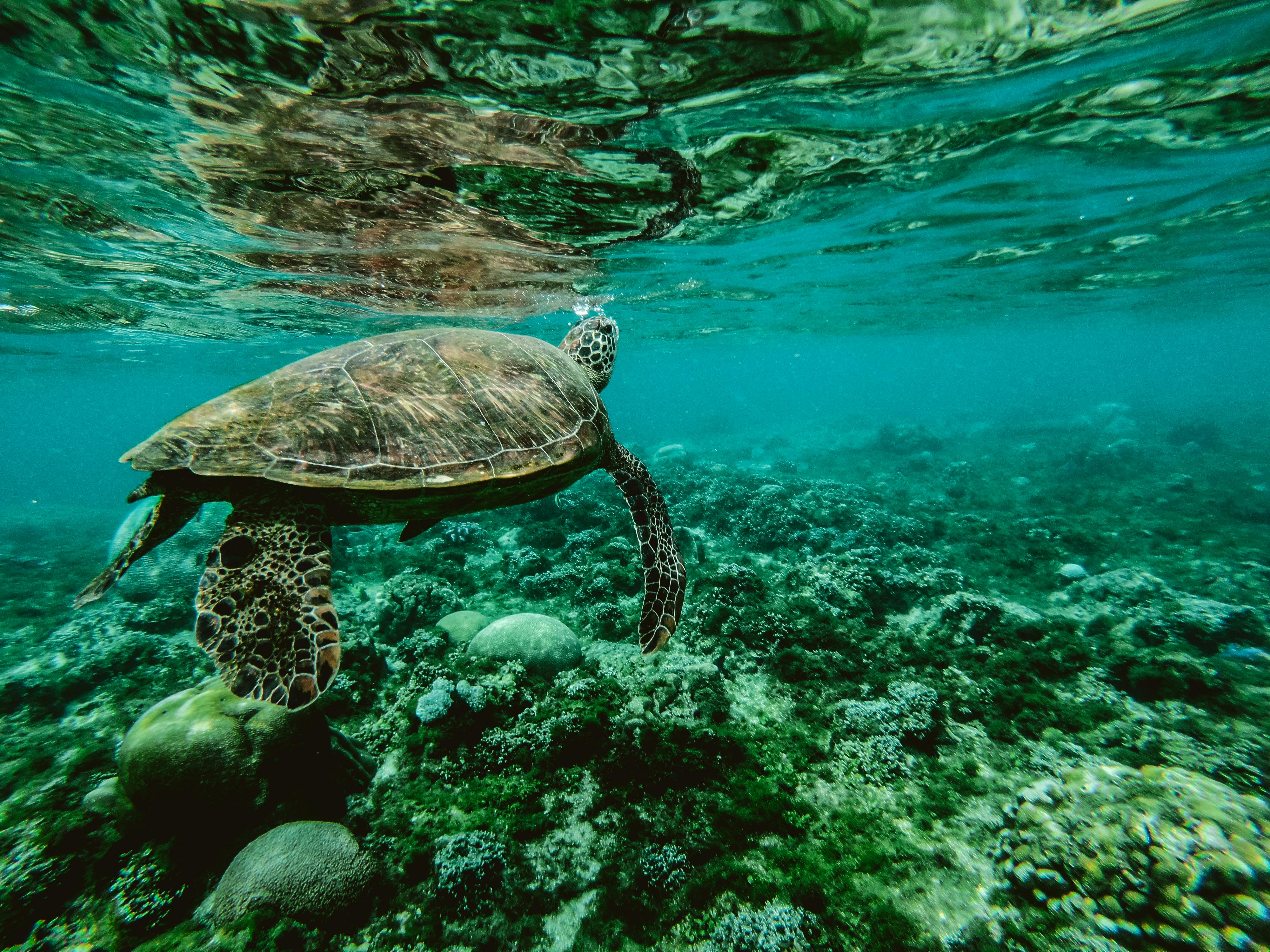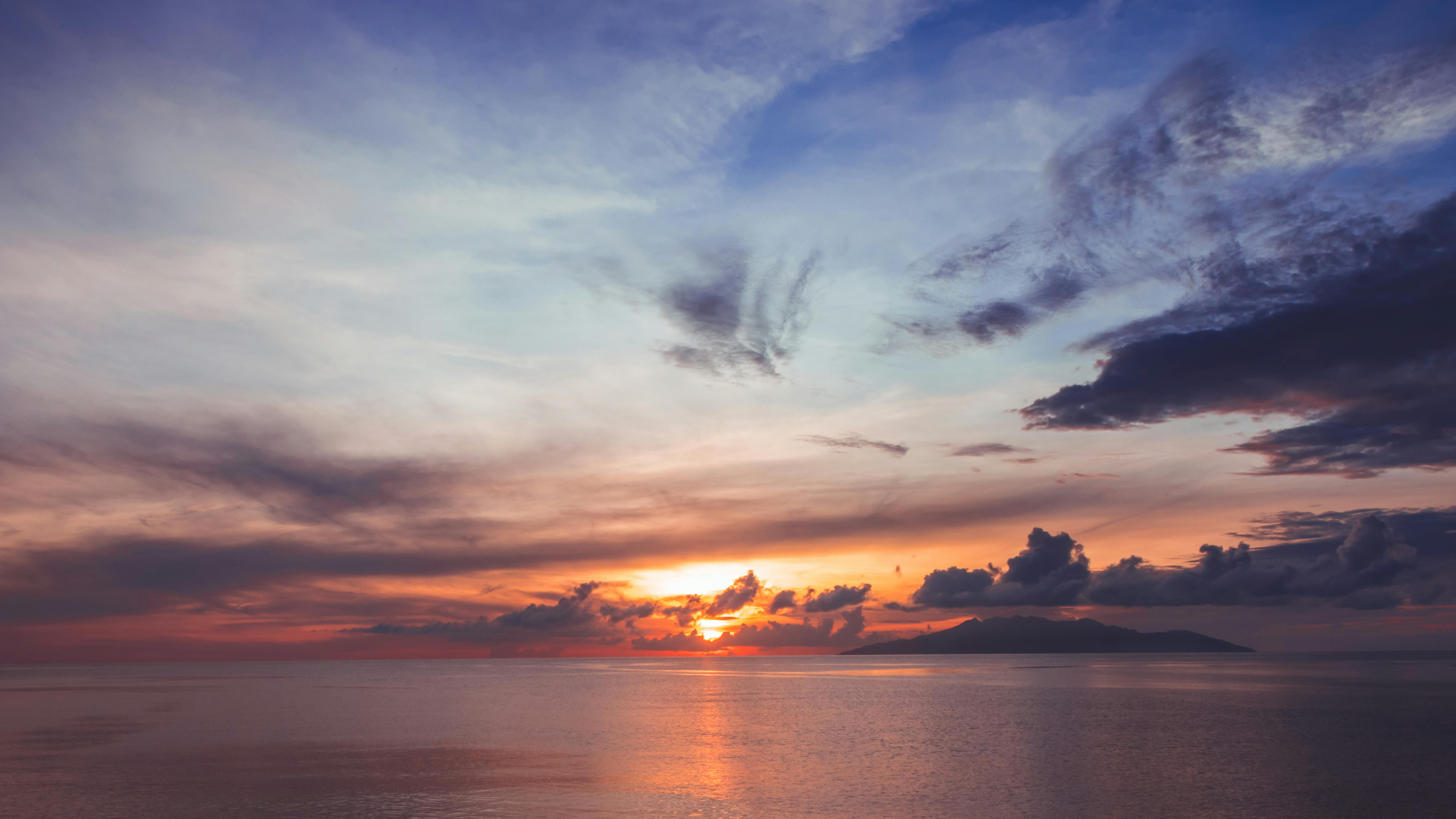Papua New Guinea (PNG) is a nation of extraordinary cultural diversity, home to over 800 distinct languages and thousands of separate tribal groups, each with their own unique traditions, beliefs, and artistic expressions. As Australia's closest northern neighbor, this remarkable country offers visitors an unparalleled opportunity to experience cultures that have maintained their traditional ways of life well into the 21st century.
This cultural tapestry is so varied and complex that anthropologists often refer to Papua New Guinea as a "living laboratory" for understanding human cultural development. In this article, we'll explore some of the fascinating cultural traditions that make PNG one of the world's most culturally rich destinations.

A Land of Unparalleled Cultural Diversity
With approximately 9 million inhabitants spread across a challenging mountainous terrain, Papua New Guinea has developed in a way that has allowed countless distinct cultural groups to flourish in relative isolation from one another. This geographical separation has resulted in:
- Over 800 languages (roughly 12% of the world's total languages)
- Thousands of different tribal groups
- Diverse artistic traditions that vary dramatically from region to region
- Complex and varied spiritual beliefs and practices
- Distinct social structures and governance systems
This extraordinary diversity means that traveling even short distances can bring you into contact with completely different cultural traditions. A custom or ceremony practiced in one village might be entirely unknown just a few valleys away.
Sing-Sings: The Living Cultural Showcases
Perhaps the most spectacular manifestation of Papua New Guinea's cultural richness is the sing-sing, a gathering where multiple tribal groups come together to share their distinct cultural traditions through music, dance, and elaborate costumes.
These events range from small local gatherings to large cultural festivals that attract tribal groups from across the country. The most famous of these is the Mount Hagen Cultural Show, held annually in the Western Highlands Province, where dozens of tribal groups gather in a riot of color, sound, and movement.
What Makes Sing-Sings Special
At a sing-sing, each tribal group performs their traditional dances wearing full ceremonial dress, which may include:
- Elaborate feathered headdresses crafted from the plumes of birds of paradise and other native birds
- Body paint in vibrant colors using natural pigments
- Decorative shells and beads, particularly valuable cowrie shells that once served as currency
- Grass skirts, tapa cloth, and other traditional garments unique to specific tribal groups
- Ceremonial weapons and tools such as spears, shields, and kundu drums
The cultural significance of these gatherings extends beyond mere performance. They serve as important social events where different groups interact, young people find potential marriage partners, conflicts are resolved, and trading relationships are established or reinforced.
Local insight: While the major cultural shows are impressive in their scale, the smaller local sing-sings often provide more authentic experiences with greater opportunities for meaningful interaction with participants. These smaller gatherings typically follow important community events such as harvests, initiation ceremonies, or conflict resolutions.

The Spirit Houses: Centers of Cultural and Spiritual Life
Throughout Papua New Guinea, but particularly along the Sepik River region, traditional "spirit houses" (known locally as haus tambaran) serve as the ceremonial, political, and spiritual centers of village life.
These impressive structures, some reaching heights of 25 meters, function as:
- Places for men to gather and make community decisions
- Repositories for sacred objects and ancestral remains
- Sites for initiation ceremonies and spiritual rituals
- Showcases for tribal art and cultural artifacts
The architecture and decorative elements of spirit houses vary widely between regions, reflecting local cultural traditions and available materials. In the Sepik River area, they typically feature dramatic façades adorned with ancestor figures and spiritual symbols, while in the Highlands, different architectural styles prevail.
Local insight: In many communities, parts of the spirit houses are still considered taboo for women and uninitiated men. As a visitor, always ask permission before approaching or photographing these structures, and be prepared to respect any restrictions on access.
Artistic Traditions: Carving Stories into Wood and Stone
Papua New Guinea's artistic heritage is extraordinarily rich, with different regions specializing in distinctive forms of creative expression. Among the most renowned are:
Sepik River Wood Carving
The Sepik River region is famous for its exceptional wood carving tradition. Artists create elaborate pieces ranging from practical items like hooks and bowls to ceremonial masks and ancestor figures that play important roles in spiritual practices.
These carvings typically incorporate powerful imagery of ancestors, spirits, crocodiles (symbolizing power and transformation), and other totemic animals. The skill involved is remarkable, especially considering many carvers work with simple tools like stone adzes and shell scrapers, though metal tools are increasingly common.
Highlands Shields and War Clubs
In the Highlands regions, traditional artistic expression often focuses on shields and ceremonial war clubs, decorated with geometric patterns that identify specific tribal affiliations. These striking objects were traditionally used in tribal conflicts but now primarily serve ceremonial purposes and as artistic expressions.
Malangan Carvings of New Ireland
The Malangan carvings of New Ireland Province are among PNG's most complex art forms. Created specifically for funerary ceremonies, these intricate sculptures incorporate multiple intertwined figures representing clan ancestors and spirit beings. After the ceremony, traditional practice dictates that these masterpieces be left to decay in the forest, returning to the natural world, though increasingly they are preserved as cultural treasures.
Local insight: When purchasing traditional art in Papua New Guinea, seek items created specifically for sale rather than pieces that may have been intended for ceremonial use. Many communities now create high-quality replicas of ceremonial objects specifically for the tourist market, allowing visitors to acquire beautiful pieces without removing important cultural items from their rightful context.

Initiation Ceremonies: Marking Life's Transitions
Throughout Papua New Guinea, initiation ceremonies mark important life transitions, particularly the passage from childhood to adulthood. These ceremonies vary dramatically between cultural groups but often share common elements:
Boys' Initiation in the Sepik
Among the most famous initiation practices are those of the crocodile cult in the Middle Sepik region. Young men undergo a painful scarification process where their skin is cut to create raised patterns resembling crocodile scales. This permanent transformation symbolizes the young man's rebirth as a full member of the community, taking on the power and spiritual aspects of the crocodile, a central figure in local mythology.
During the weeks or months of seclusion that accompany this physical transformation, initiates receive cultural education from tribal elders, learning sacred knowledge, origin stories, spiritual practices, and the practical skills needed for adult life.
Highlands Initiation Practices
In the Highlands, initiation often involves periods of seclusion in the forest or special initiation houses, where young people receive instruction from elders. Physical challenges may include food restrictions, exposure to harsh conditions, and in some regions, bloodletting rituals believed to purge "female blood" acquired from the mother, preparing young men for warrior status.
Girls' Initiation Ceremonies
Though less widely documented than male initiations, female initiation ceremonies are equally important in many PNG societies. These often focus on instruction in women's knowledge, including gardening techniques, childcare, weaving, and women's magic and spiritual practices. In some regions, coming-of-age ceremonies for young women involve elaborate body decoration, special dances, and public acknowledgment of their new adult status.
Local insight: While some aspects of traditional initiation practices are being modified in contemporary PNG society, particularly those involving physical hardship, many communities are working to preserve the educational and cultural components of these traditions, recognizing their importance for cultural identity and transmission of knowledge.
The Role of the "Big Man": Traditional Leadership
In many Papua New Guinea societies, particularly in the Highlands, traditional leadership revolves around the concept of the "Big Man" - an individual who achieves status through a combination of personal qualities and actions rather than inherited position.
Unlike hereditary chieftains found in some Pacific societies, the Big Man earns his position through:
- Demonstrating exceptional skills in oratory, warfare, or dispute resolution
- Accumulating wealth through hard work and strategic marriages
- Distributing wealth through feasts and gift-giving, building a network of obligations
- Successfully mediating conflicts within and between communities
This leadership system is remarkably egalitarian in principle, as status must be earned and continuously demonstrated rather than simply inherited, though in practice, being the son of a Big Man provides advantages through education and access to resources.
The Big Man system interacts in complex ways with modern democratic governance in today's Papua New Guinea, with traditional leaders often serving alongside or within formal government structures at local and sometimes national levels.
Traditional Knowledge: Living in Harmony with the Land
Papua New Guinea's diverse cultures have developed sophisticated knowledge systems for living sustainably in their environments over thousands of years. These traditional ecological knowledge systems include:
Agricultural Practices
PNG is one of the places where agriculture was independently invented, with evidence of cultivated plants dating back over 10,000 years. Traditional farming techniques include:
- Complex intercropping systems that maintain soil fertility
- Sophisticated irrigation methods in the Highlands
- Sustainable rotation systems that prevent soil depletion
- Cultivation of hundreds of varieties of staple crops like taro, yam, and sago
Medicinal Plant Knowledge
Local healers maintain extensive knowledge of medicinal plants, with different preparations used to treat various ailments. This traditional pharmacopeia includes remedies for pain relief, wound healing, digestive problems, and fever reduction. Scientific research has confirmed the efficacy of many of these traditional medicines, and pharmaceutical companies have shown interest in documenting this knowledge (raising important questions about intellectual property rights).
Navigation and Weather Prediction
Coastal communities have developed sophisticated techniques for navigation and weather prediction, allowing safe passage between islands and alerting communities to approaching storms. These systems incorporate observations of star positions, ocean currents, cloud patterns, and animal behavior into comprehensive knowledge frameworks passed down through generations.

Changing Traditions: Culture in the Modern Context
Like all living cultures, Papua New Guinea's traditions are not static but continue to evolve in response to contemporary influences and challenges:
Christianity and Traditional Spirituality
Since the arrival of missionaries in the late 19th century, Christianity has become the predominant formal religion across PNG, with over 95% of the population identifying as Christian. However, this doesn't represent a simple replacement of traditional beliefs. Instead, many communities have developed syncretic practices that incorporate Christian elements alongside traditional spiritual beliefs and rituals.
In many villages, Christian church services coexist with traditional ceremonies, and communities may invoke both Christian prayers and ancestral spirits for protection and guidance. This cultural flexibility has allowed communities to embrace aspects of modernity while maintaining important connections to their traditional worldview.
Technology and Traditional Life
Even in remote areas, technology is changing daily life. Mobile phones have rapidly proliferated across PNG, improving communications in regions where roads are limited or non-existent. Solar panels provide electricity in villages far from power grids, powering lights, cell phones, and occasionally televisions or radios.
These technologies are being integrated into traditional life in creative ways. For example, mobile phones facilitate the organization of traditional ceremonies, while solar lighting enables craft production during evening hours. Rather than erasing traditional culture, technology often provides new ways to express and share cultural identity.
Cultural Preservation Efforts
Recognizing the global significance of their cultural heritage, many PNG communities are actively working to document and preserve traditional knowledge and practices. These efforts include:
- Community-based museums and cultural centers
- Language documentation projects
- Programs teaching traditional crafts to younger generations
- Cultural festivals that promote intergenerational knowledge transfer
Organizations like the Papua New Guinea National Museum and Art Gallery work with local communities to document traditions and provide platforms for cultural expression, while educational institutions increasingly incorporate traditional knowledge into their curricula.
Experiencing PNG's Cultural Richness as a Visitor
For travelers interested in experiencing Papua New Guinea's remarkable cultural traditions, several approaches offer authentic and respectful engagement:
Cultural Festivals
Major cultural festivals provide opportunities to witness multiple tribal groups showcasing their traditions in a single location. The most significant include:
- Mount Hagen Cultural Show (August) - The largest and most famous cultural festival
- Goroka Show (September) - Coinciding with Independence Day celebrations
- Mask Festival in Rabaul (July) - Featuring the famous Baining fire dancers
- Crocodile Festival in the Middle Sepik (August) - Celebrating the cultural significance of crocodiles
Village Stays
Several communities offer homestay experiences where visitors can participate in daily village life, learning about traditional practices firsthand. These immersive experiences provide deeper understanding of cultural context and support local economies directly. The Sepik River region, Trobriand Islands, and certain Highlands communities offer well-established community-based tourism initiatives.
Cultural Centers and Museums
The Papua New Guinea National Museum and Art Gallery in Port Moresby houses an outstanding collection of cultural artifacts and provides important context for understanding the country's diverse traditions. Regional cultural centers in locations like Mount Hagen, Goroka, and Wewak offer additional insights into local cultural practices.
Responsible cultural tourism considerations:
- Always seek permission before photographing people or cultural sites
- Respect gender restrictions related to certain ceremonies or spaces
- Be willing to pay reasonable fees for cultural performances or photography
- Learn a few basic greetings in local languages as a sign of respect
- Consider bringing appropriate gifts for village stays (school supplies, medicine, or fishing equipment are often appreciated)
Papua New Guinea's cultural diversity represents one of humanity's greatest treasures - a living testament to the incredible variety of ways humans have developed to express themselves, organize their societies, and relate to the natural and spiritual worlds.
For visitors willing to venture beyond their comfort zone, PNG offers unparalleled opportunities to witness cultural traditions that have been refined over thousands of years yet continue to evolve and adapt to contemporary challenges. In a rapidly homogenizing world, these living cultural traditions remind us of the depth and breadth of human creativity and resilience.
At MonisParaf Travel, our Papua New Guinea Expedition is designed to provide meaningful cultural encounters while ensuring that tourism benefits local communities and supports cultural preservation. Through respectful engagement with Papua New Guinea's remarkable cultural heritage, visitors not only gain unforgettable experiences but also contribute to the ongoing vitality of one of the world's most diverse cultural landscapes.